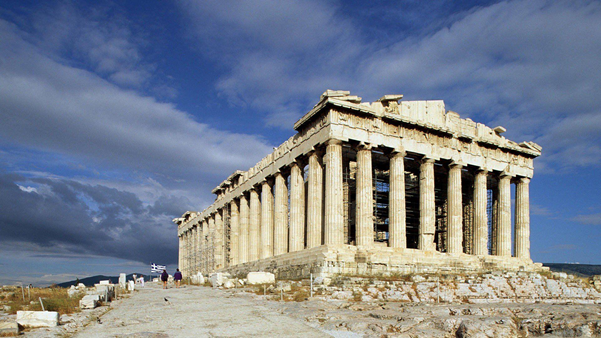
Monuments of Time
A glimpse into natural marble that has stood the tests of time, all over the world.
From time immemorial, man has evolved to have an eye for the beautiful details of nature and particularly, the celestial appeal of natural stones. It comes as no surprises indeed, that history stands testament to the artistic abilities numerous architects, designers and sculptors whose masterpieces have been built out of the finest marble of their times. The finesse of the material, combined with its ability to bear the artistic brilliance of the maker, has for long, made marble the preferred material of use, for numerous monumental structures.
Beginning with the Parthenon, in the Athenian Acropolis in Greece – marble is seen used in multiple places in this monument, constructed between 447 – 438 BC. From the pillars to the panels of the walls, everything in this monument, right up to its roof is made of marble, extracted from the Penteli ranges to the north-east of erstwhile Athens. A flawless white stone with a uniform faint yellow tint (making the stone shine like gold in the sunlight), Penteli is today a rare find as far as marble extractions go.
Another stunning specimen of exemplary use of marble in architecture in the centuries gone by, remains the Piazza del Duomo in Pisa, Italy. A cathedral entitled to Santa Maria Assunta, this beautiful monument, one of the finest works of its architect Busketo, set the model for a distinctive style of architecture for the years to come: the Romanesque style, unique to the Medieval era. Made by a master named Rainaldo, the façade of this cathedral has grey marble and white stones set with discs of coloured marble, while Busketo went ahead with a black and white marble gilded ceiling and a frescoed dome, for the interiors. Complete with impressive Corinthian columns (the only part of the structure made of decorative granite), this architectural marvel begun in 1064 continues to stun thousands of visitors from all across the globe, each year.
Last but not the least, a universally admired symbol of eternal love and poetically serenaded as ‘A Teardrop on the Cheek of Time’, the Taj Mahal was built between 1632 and 1653. Declared a UNESCO World Heritage Site in 1983, this stunning monument remains one of the finest enduring remnants of Mughal architecture in India. Combining elements of Persian, Turkish and Indian architectural styles, this mausoleum made of white marble stands on a square plinth, topped by a 35-meter-tall dome and finial. The marble used in the construction of the Taj Mahal is known to have been extracted from Makrana in Rajasthan, India, which to this day, gleams with the elegance of an ever-lasting tale of beauty, in the heart of North India.
Time has proven to us the magnificence of marble – as a stone, as a building material and most importantly, a symbol of lasting strength and durability. When you lay the foundation in building your empire, settle for no lesser than the finest Italian marble, quarried from the world’s best ranges and personally curated by the Directors of the Marble Italia Group. After all, when it comes to your legacy, where better to write it, than in stone.
To experience the magnificence of marble in all its glory and to find the perfect stone for you, reach out to our team of experts and arrange a visit to the Marble Italia Gallery today.
